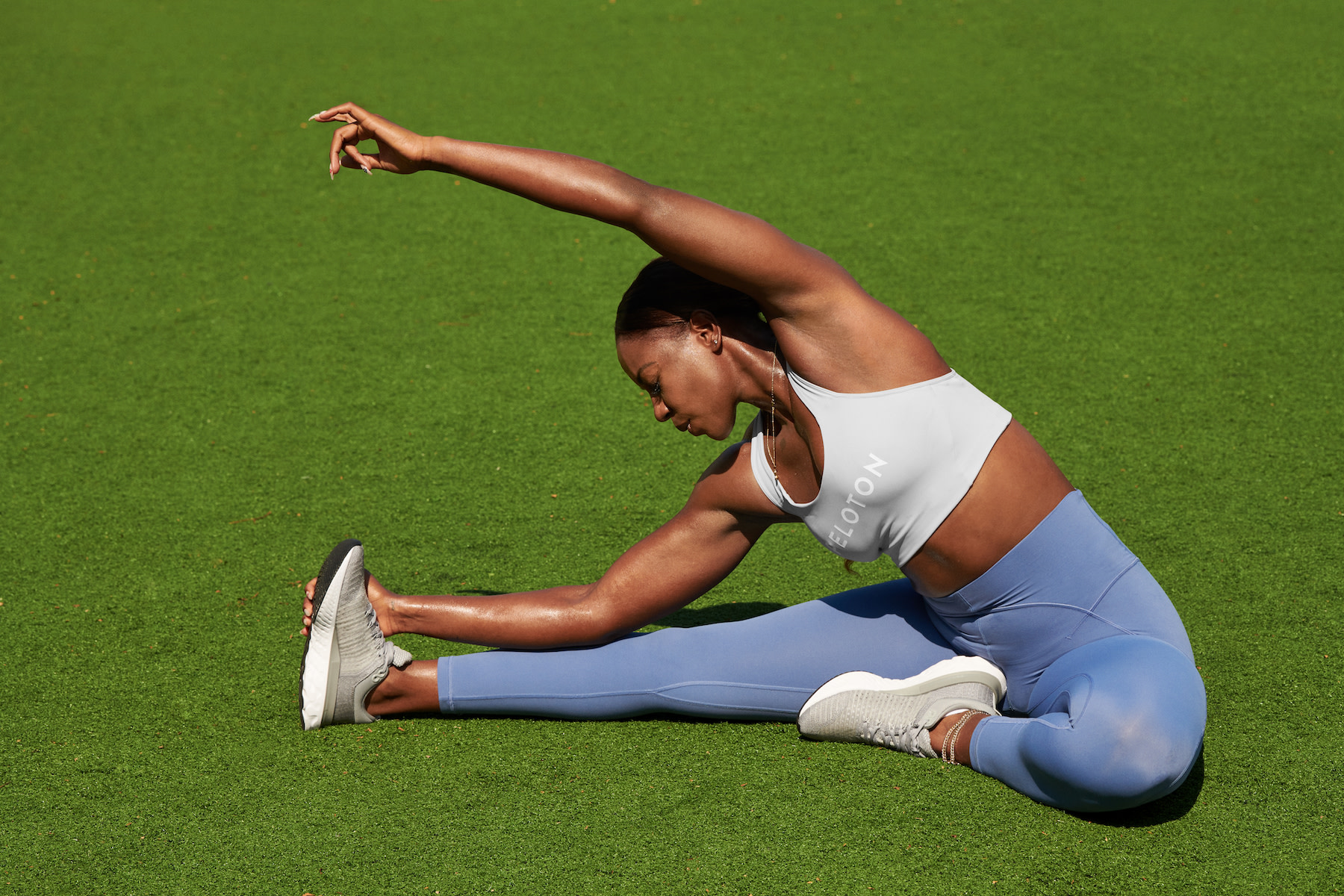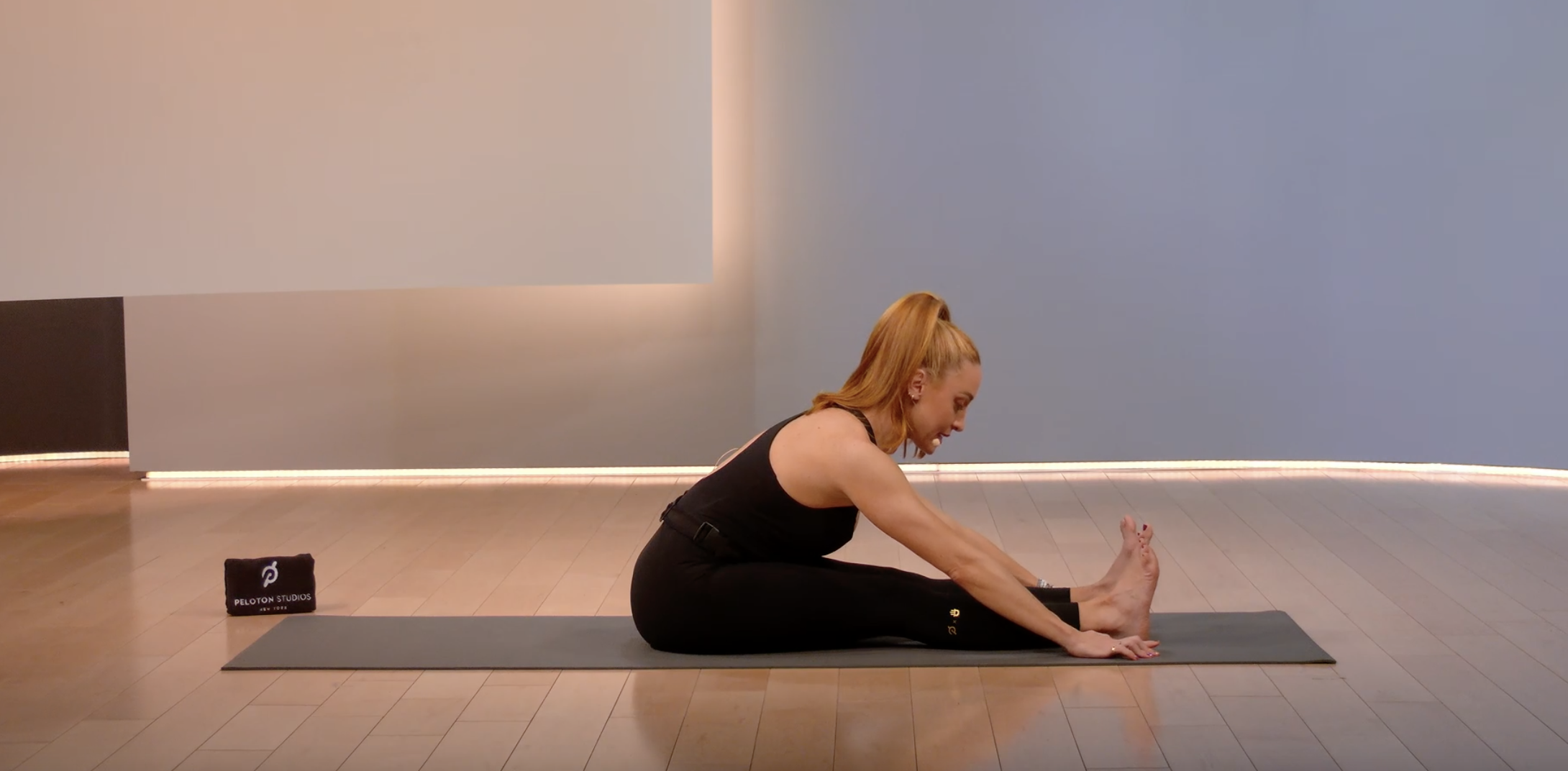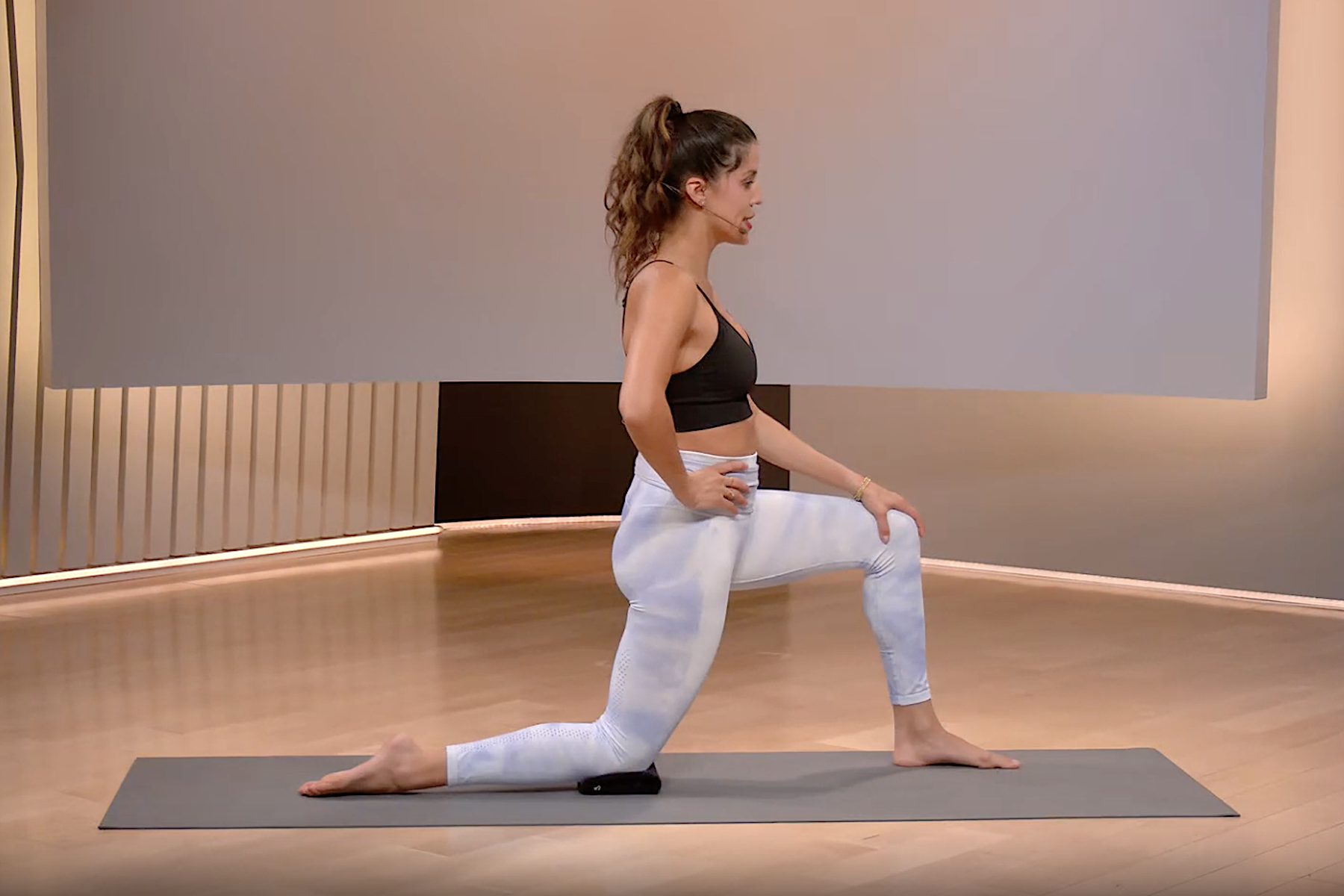
Why Fascia—Not Muscle—Should Be Your Next Focus Area for Better Recovery
Find out how to keep your fascia healthy.
By Emily Laurence•
What Is Fascia?
How Fascia Affects Fitness Performance, Recovery, and Pain
The Importance of Keeping Your Fascia Healthy
3 Fascia Stretches to Release Tight Fascia
If you work out regularly (or even just once in a while), you’ve probably thought about ways you can avoid straining a muscle or putting too much pressure on your joints. But have you ever thought about how to keep your fascia healthy? Fascia is tissue that connects all of our organs and muscles. Think of it as the glue that holds the body together.
Discover more ways to reach your goals with Peloton
Without fascia, we wouldn’t be able to even stand up straight, let alone engage in any athletic activity. Keeping your fascia healthy isn’t just important for fitness performance, but also for moving effectively through everyday life. Keep reading for everything you need to know about fascia, including its role in the body, how it impacts fitness performance, and how to keep it healthy.
What Is Fascia?
Alexander Rothstein, MS, ACSM, an exercise physiologist and the program coordinator of Exercise Science at New York Institute of Technology, says that what’s tricky about fascia is that researchers haven’t settled on one specific definition for it. But what’s widely agreed upon is that fascia is the tissue surrounding all of the body’s organs, muscles, bones, and nerve fibers. “It’s a three dimensional continuum, which means that it covers the entire body,” Rothstein says.
“Fascia is a connective tissue that surrounds and supports muscles, bones, and organs throughout the body. It is composed of collagen and other proteins,” says Peloton instructor Dr. Charlotte Weidenbach, who is a trained medical doctor. She explains that the word “fascia” comes from the Latin word for “band.” “It can be pictured as a web-like structure, and it has a lot of different functions,” Dr. Weidenbach says.
What Does Fascia Do?
What’s really fascinating about fascia is that everything it does for the body isn’t even fully known, says Dr. Weidenbach. However, research has pointed to a few of its important functions. First, fascia provides a framework that helps maintain the integrity of the body, says Dr. Weidenbach. According to Rothstein, if all we had was our skeleton and fascia, we could still stand up. But without any fascia, this would be completely impossible. In other words, we need fascia to hold our insides together—literally.
“[Fascia] also allows different structures to slide and move smoothly against each other,” Dr. Weidenbach says. This is because by holding muscles together, fascia allows them to contract and stretch. Think about when you cycle on a bike for example. This movement requires coordinated movement from various muscles (including the hamstrings and quadriceps) and joints (including in the knees, ankles, and toes). Without fascia, there would be no coordination between them—or anything connecting them.
What Are the Different Layers of Fascia?
As Rothstein explained, fascia covers the entire body. But there are also different layers of fascia: superficial, deep, visceral, and parietal, all of which are explained below:
Superficial fascia: Superficial fascia is found directly under the skin and is the layer closest to the surface. It’s important for reducing the risk of varicose veins, which are swollen or twisted veins that lie just under the skin. It also transports blood vessels and nerves to and from the skin and helps with movement.
Deep fascia: Deep fascia surrounds bones, muscles, nerves, and blood vessels. Dr. Weidenbach says that this is the most important layer for mobility since deep fascia transmits the force generated by muscles during movement. She says it also plays a role in muscle contraction, allowing the force to be distributed efficiently across various tissues. “This helps in coordinating movement and maintaining joint stability,” she says. Deep fascia facilitates smooth and coordinated movement by allowing muscles to glide past each other, which promotes flexibility and ease of motion by reducing friction between muscles. In addition to all of this, she says that deep fascia contains blood vessels that facilitate circulation through the muscle and provide it with nutrients. It’s also important for regeneration after training and injuries.
Visceral fascia: Visceral fascia surrounds organs in cavities, such as the abdomen, lungs, kidneys, and heart. It’s important for holding organs (and the blood vessels and organs that surround them) in place.
Parietal fascia: Parietal fascia refers to tissue lining the body cavity. It provides support for surrounding tissues and helps to reduce friction.
What Is the Difference Between Fascia, Tendons, and Ligaments?
While it can be helpful to think of fascia as a web that connects our insides together, this can also be confusing. Isn’t that what tendons and ligaments do? While fascia, tendons, and ligaments all play a role in connecting parts of the body together, there are differences between them.
“Fascia surrounds and supports various structures with many different functions. Tendons [specifically] connect muscles to bones, which is important for control and precision of movement,” Dr. Weidenbach says. Tendons are the bridge between muscle strength and bones and joints.
As for ligaments, they connect bones to each other within joints, which is important for joint stability and limiting their range of motion. “Each tissue type has unique properties and functions that contribute to the overall function and stability of the musculoskeletal system,” Dr. Weidenbach says.
How Fascia Affects Fitness Performance, Recovery, and Pain
Living a sedentary life can shorten or stiffen fascia. Fascia stretching (also sometimes referred to as fascia training) is an important way to avoid this. “Fascia stretching means going through a range of motion with other planes of movement,” Rothstein says. “For example, instead of holding a specific position for 30 seconds and stretching a muscle statically, you are stretching it through a range of degrees or directions.”
Regular fascia stretching can help improve fitness performance, support athletic recovery, and help prevent pain. Before getting into specific fascia stretches to try at home, learn more below about how fascia is connected to fitness performance, recovery, and pain.
Fascia and Fitness Performance
It bears repeating that it would be impossible to move at all without fascia. Running, cycling, throwing a ball…none of it could happen without fascia. By doing fascia stretching regularly (Rothstein recommends doing it every day), you can actually improve your fitness performance.
One reason for this is because it makes fascia more flexible, which can help make movements more efficient. Scientific research shows that this can help with strength training. In the study, participants who did fascia stretching for 10 weeks made significant gains in strength training versus the control group.
“Fascia stretching may promote better blood circulation within the fascial tissues,” Dr. Weidenbach says. This is another way it helps with fitness performance because improved blood flow supplies muscles with oxygen so they can function more efficiently.
Fascia and Fitness Recovery
Fascia stretching not only can help you improve your athletic performance, but it also can help the body recover from it too. Since fascia stretching helps improve blood flow, Dr. Weidenbach says this can help with delivering nutrients and oxygen to the cells, as well as help remove waste products, supporting overall tissue health.
Since fascia stretching prevents fascia from getting stiff, it can also help reduce soreness after intense physical activity, says Dr. Weidenbach. She adds that fascia stretching may contribute to increased joint range of motion, which plays an important role in recovering from injuries as well as preventing them.
Fascia and Pain
Anytime you’re experiencing muscle pain or joint pain, Rothstein says that the fascia was surely impacted too; again, it’s all connected. It can be tricky to pinpoint whether a problem lies in a muscle, joint, or fascia, but one good way to tell is by noticing if gentle movement makes the pain better or worse. If the answer is better, the issue is likely with the fascia. If not, it’s likely the muscle or joint (wherever you feel the pain).
When the fascia becomes inflamed, it can lead to a chronic condition called myofascial pain syndrome, something an estimated 85% of people will experience at some point in their lives. Symptoms of myofascial pain syndrome include aching or throbbing pain, knots in muscles, sore muscles, weak muscles, and a reduced range in motion.
Both experts say that fascia stretching, foam rolling, and massage are all effective ways to treat fascial pain.
The Importance of Keeping Your Fascia Healthy
As you know by now, healthy fascia is vital for functioning properly and avoiding injury. “You will move better in your body when your fascia is healthy,” Rothstein says. When it comes to keeping fascia healthy, it’s important to know what can negatively impact it as well as what supports it.
Causes of Fascial Restriction or Tight Fascia
As previously mentioned, one of the main ways fascia can become damaged is through inactivity, which both shortens fascia and causes it to become stiff. This is because inactivity literally changes the makeup of fascia, decreasing collagen proteins and increasing inflammatory proteins.
Another cause of fascial damage is repetitive motions, such as throwing a ball or swinging a tennis racquet repeatedly. This is because repetitive movement can overwork one part of the body, increasing inflammation.
The last major way fascia can be damaged is through injury or surgery. Since fascia is so intricately connected throughout the body, it’s rare that a muscle, joint, or nerve would be affected without impacting the fascia.
3 Fascia Stretches to Release Tight Fascia
Rothstein says that fascia stretching is so important that he recommends doing it every day. There are some forms of activity he says that naturally help release tight fascia, such as yoga and tai chi. But if you are looking for some specific fascia stretches to try, here are three to incorporate into your routine, either before or after you work out—or any time of the day.

1. Seated forward bend
“I really like to do this stretch after cycling or at the end of the day. It is excellent for targeting the fascial connections in the posterior chain, so mainly the hamstrings and the fascia along the spine,” Dr. Weidenbach says.
1. Sit down on the ground with your legs straight forward and toes pointing upwards.
2. Hinge at the hips and slowly bend forward, breathing out. Hold for a few breaths, at least 20 seconds.
3. If your hamstrings feel tight, bend your knees slightly to relieve the tension.

2. Hip flexor fascia stretch
Rothstein says this is one of his favorite fascia stretches for maintaining hip mobility, a part of the body that is often neglected.
1. Lunge forward, with one knee on the floor and the other one beant at 90 degrees in front of you.
2. Lean forward slightly, bringing the stretch into the front of your thigh and front of your hip.
3 .Lift your arms and gently twist the body from side to side. Hold for three to five breaths.
4. Switch legs and repeat.

3. Sun salutation
This yoga pose is a great fascia stretch, according to Rothstein. “This stretch helps with motion through the torso and arms,” he says.
Start standing with your feet together and your arms at your sides.
Breathe in and lift your arms up to the ceiling.
Bring your palms together, over your head. As you exhale, release your arms down toward the floor, bending at the waist.
Inhale and lift your head, keeping your back flat. Hold for three to five breaths.
Avoid these Common Fascia Stretching Mistakes
There are a few common mistakes experts say they see people making when it comes to fascia stretching. “The biggest mistake people make is stretching too hard,” Rothstein says. He emphasizes that fascia stretching shouldn’t hurt. “On a scale of one to ten with one being feeling nothing and 10 being in a lot of pain, you want to aim for around a five,” he says.
Another mistake Rothstein says he sees is believing that static stretching (holding a position for a long time) is the same as fascia stretching. Unlike with static stretching, movement is a key part of fascia stretching.
According to Dr. Weidenbach, fascia stretching should be slow and involve deep breathing. If you’re rushing through the stretches or holding your breath, you’re doing it wrong. Last, she emphasizes that it’s important to listen to your body. “The stretches don't look the same for everyone, so accept your range of motion and try to work from there,” she says.
By incorporating fascia stretching into your routine, you’ll move more easily through your days and just may find your workouts improving too. Most importantly, your body will feel better and you have a lower risk of getting injured.

Peloton App
Access thousands of classes with no equipment needed.
This content is for informational and educational purposes only and does not constitute individualized advice. It is not intended to replace professional medical evaluation, diagnosis, or treatment. Seek the advice of your physician for questions you may have regarding your health or a medical condition. If you are having a medical emergency, call your physician or 911 immediately.
Level up your inbox.
Subscribe for a weekly dose of fitness, plus the latest promos, launches, and events.
By providing your email address, you agree to receive marketing communications from Peloton.
For more about how we use your information, see our Privacy Policy.








